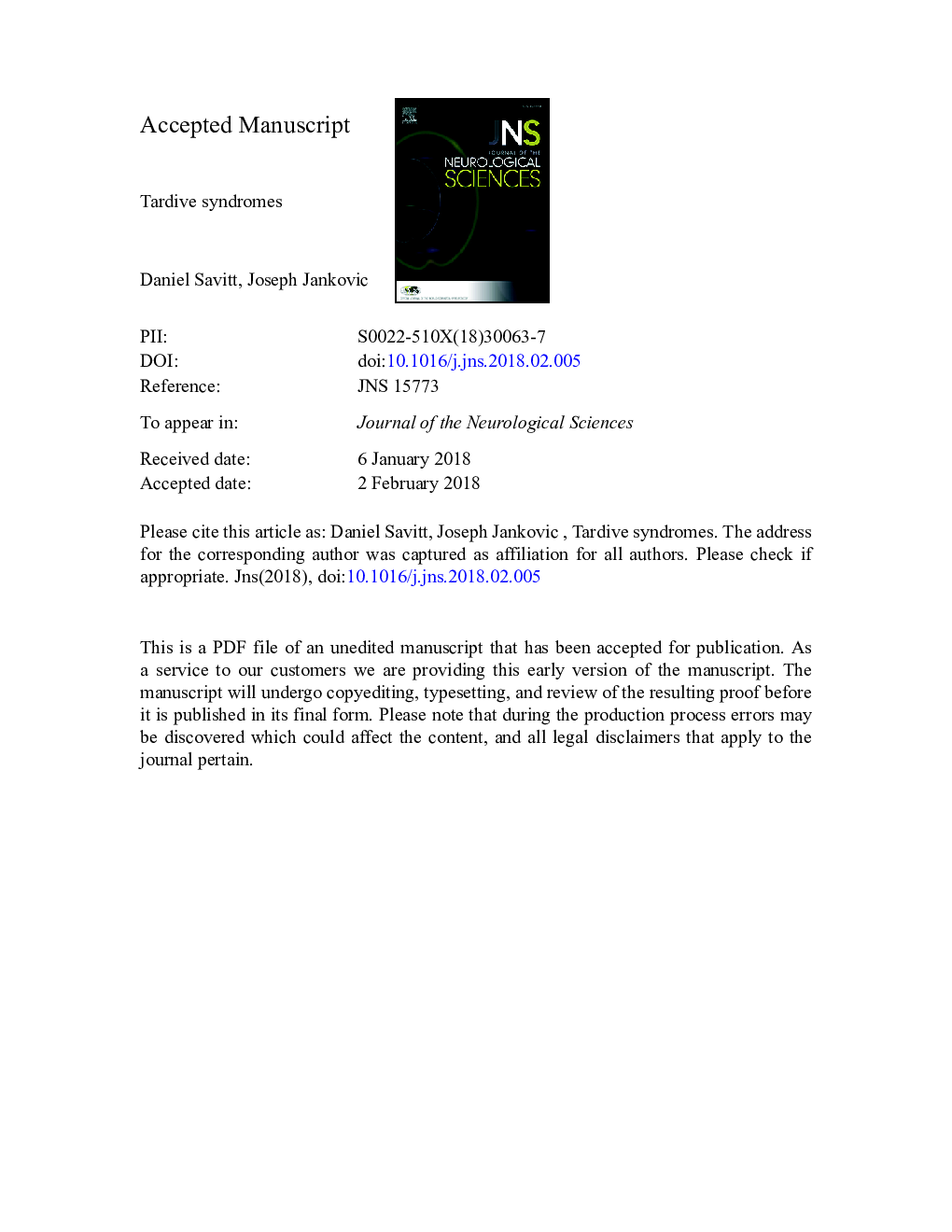| Article ID | Journal | Published Year | Pages | File Type |
|---|---|---|---|---|
| 8272500 | Journal of the Neurological Sciences | 2018 | 39 Pages |
Abstract
Tardive syndromes are a group of hyperkinetic and hypokinetic movement disorders that occur after some delay following exposure to dopamine receptor blocking agents such as antipsychotic and anti-emetic drugs. The severity of these disorders ranges from mild to disabling or even life-threatening. There is a wide range of recognized tardive phenomenologies that may occur in isolation or in combination with each other. These phenomenologies include stereotypy, dystonia, chorea, akathisia, myoclonus, tremor, tics, gait disorders, parkinsonism, ocular deviations, respiratory dyskinesia, and a variety of sensory symptoms. Recognition of the various tardive phenomenologies may not only lead to early diagnosis but also to appropriate therapeutic intervention. This review focuses on the diagnosis and clinical course of tardive syndromes and how to distinguish between the various phenomenologies as well as how to differentiate them from other, similar but etiologically different, movement disorders.
Related Topics
Life Sciences
Biochemistry, Genetics and Molecular Biology
Ageing
Authors
Daniel Savitt, Joseph Jankovic,
